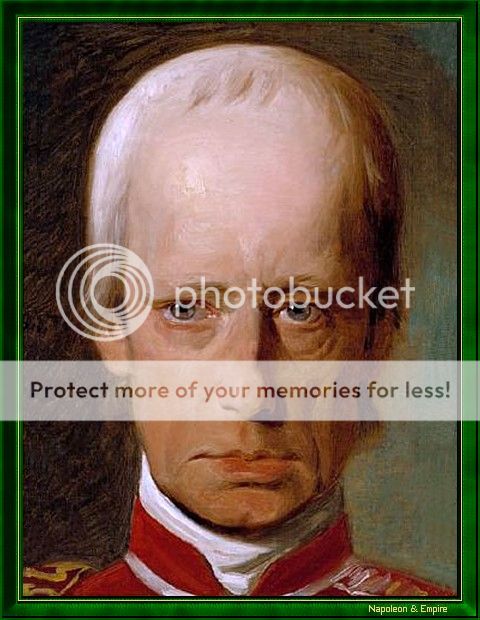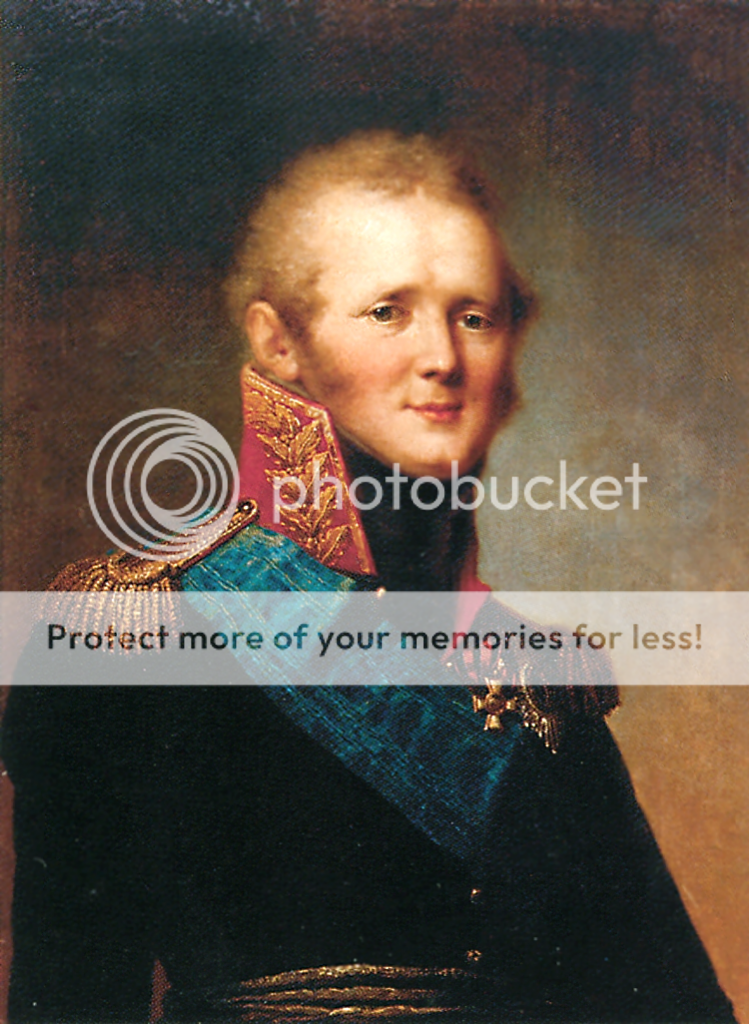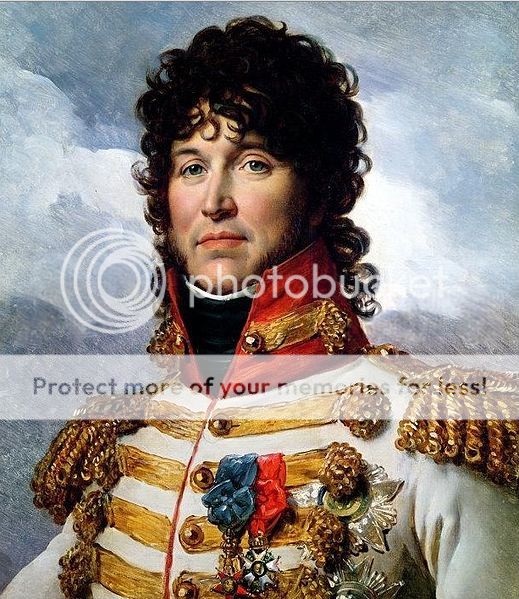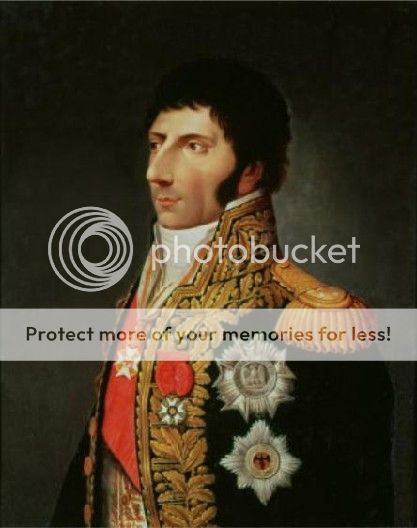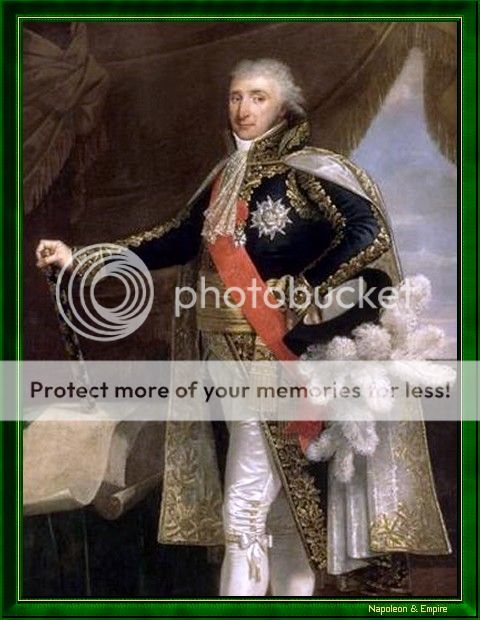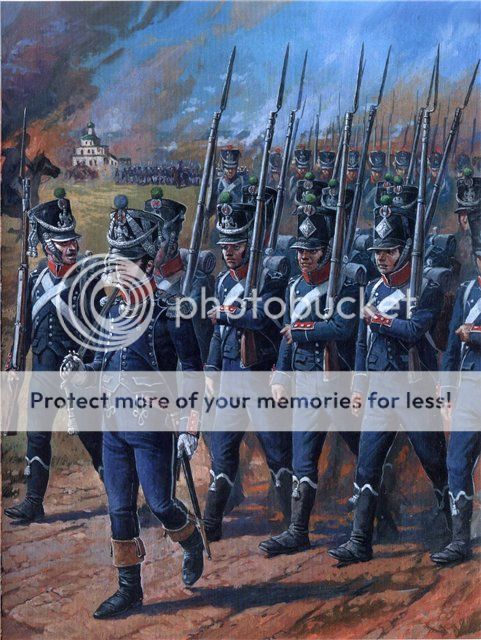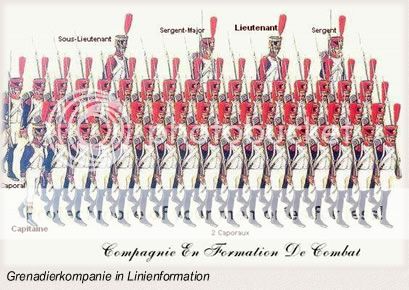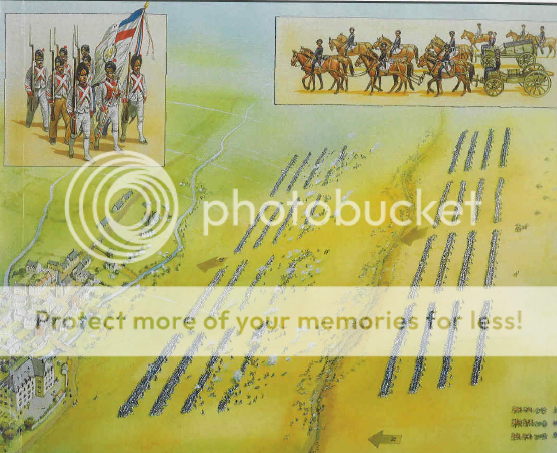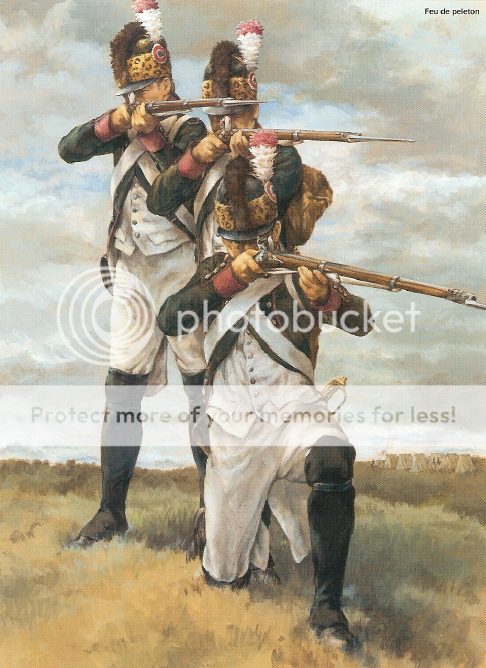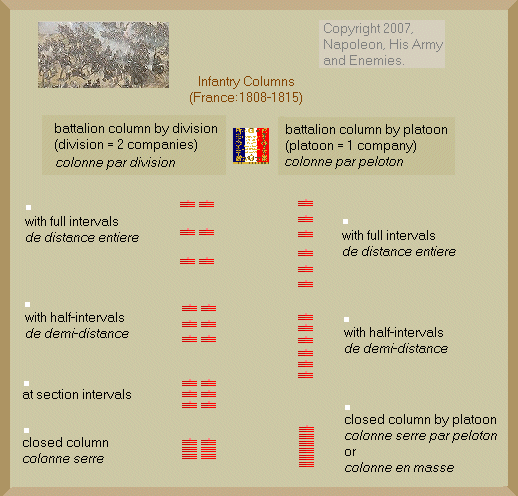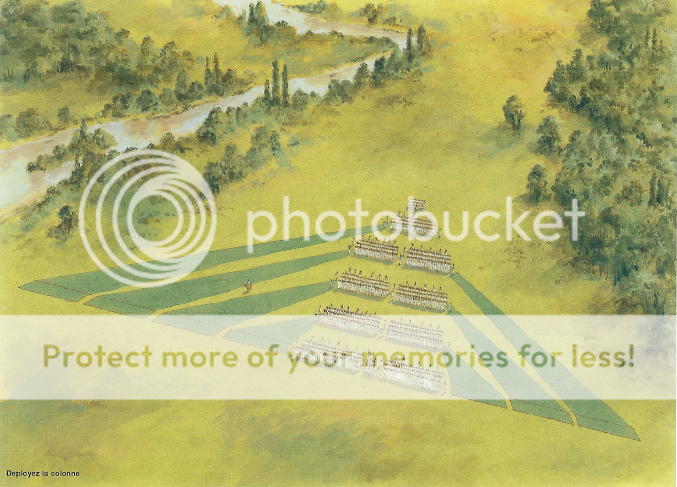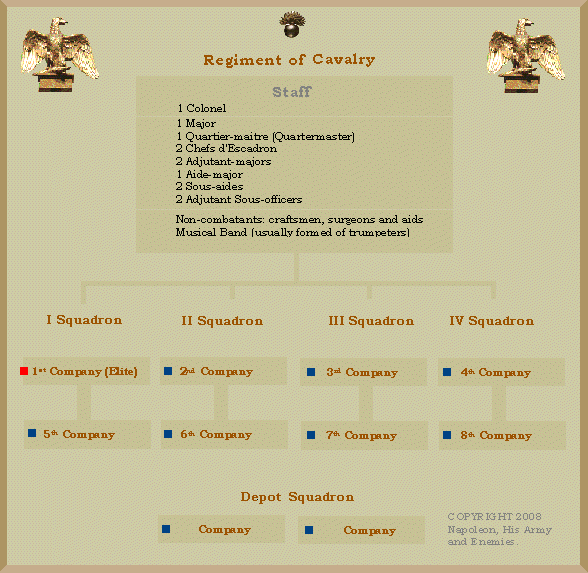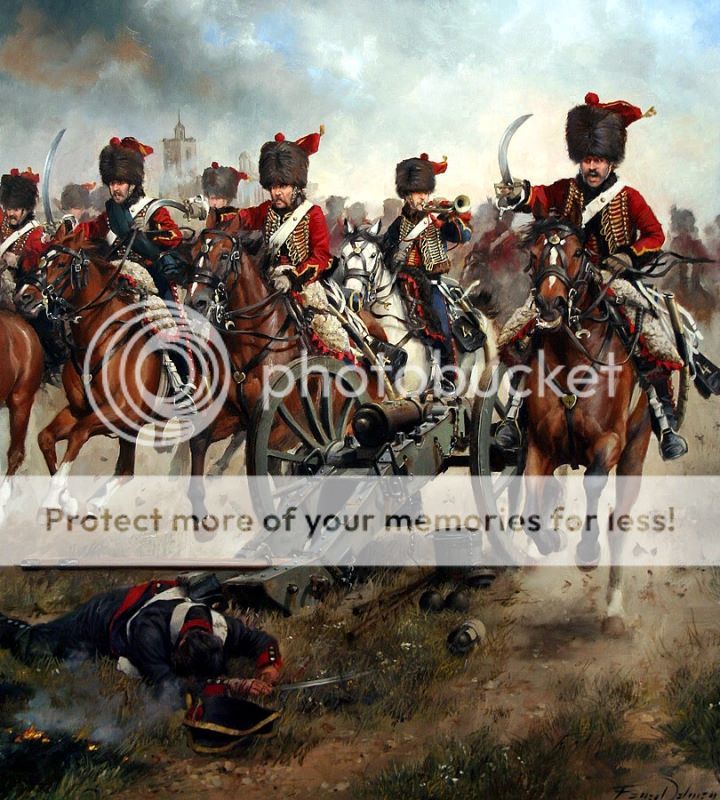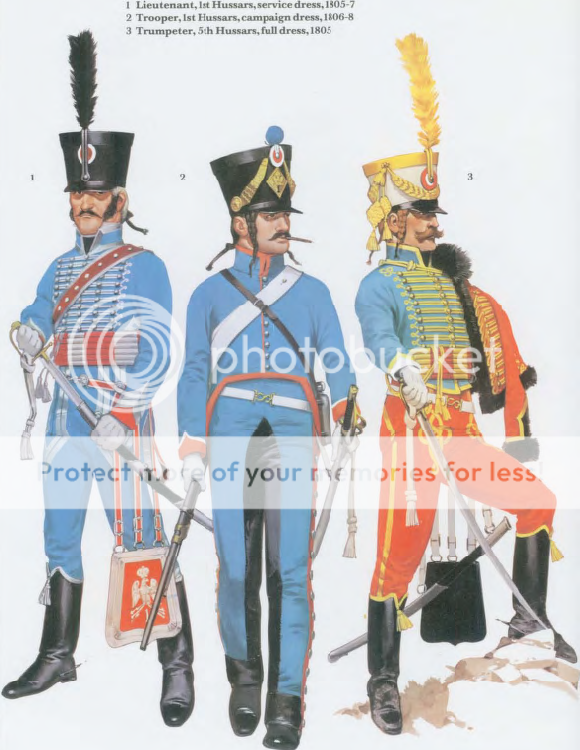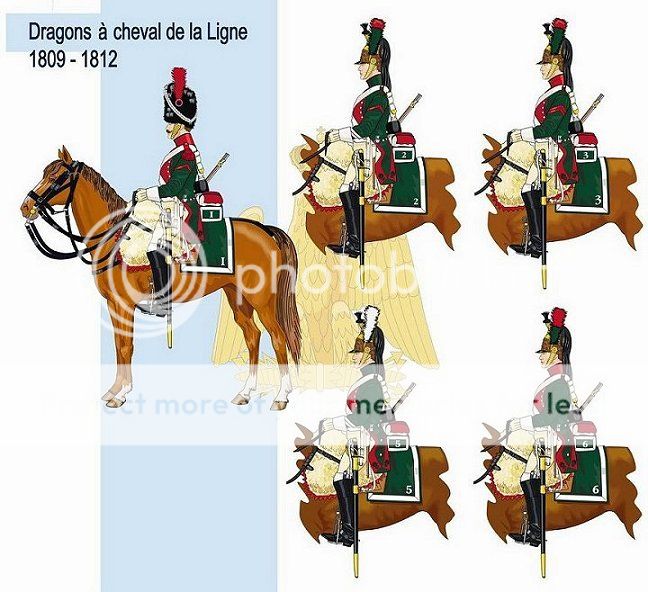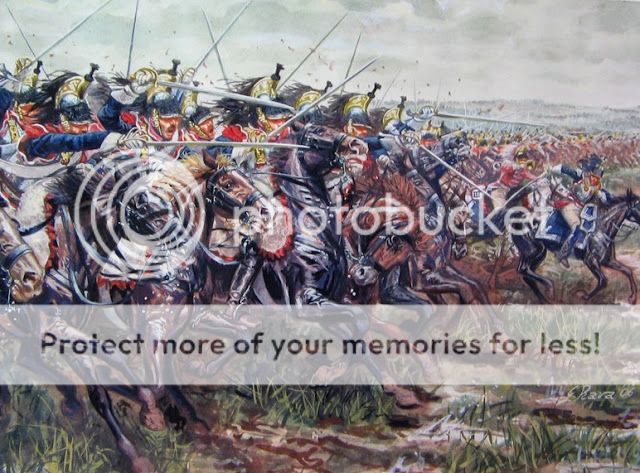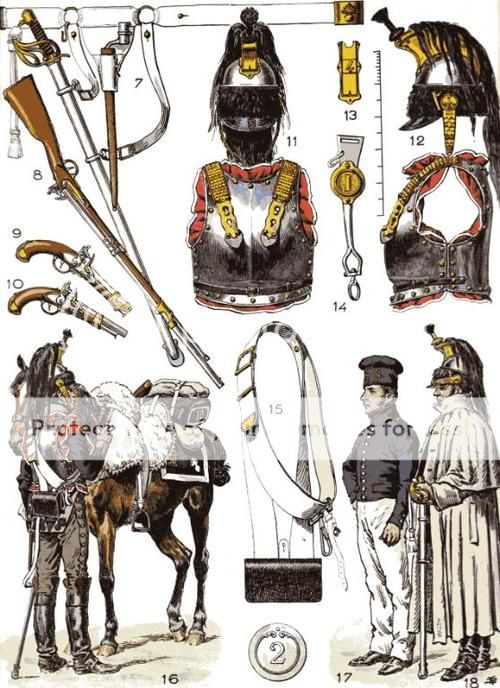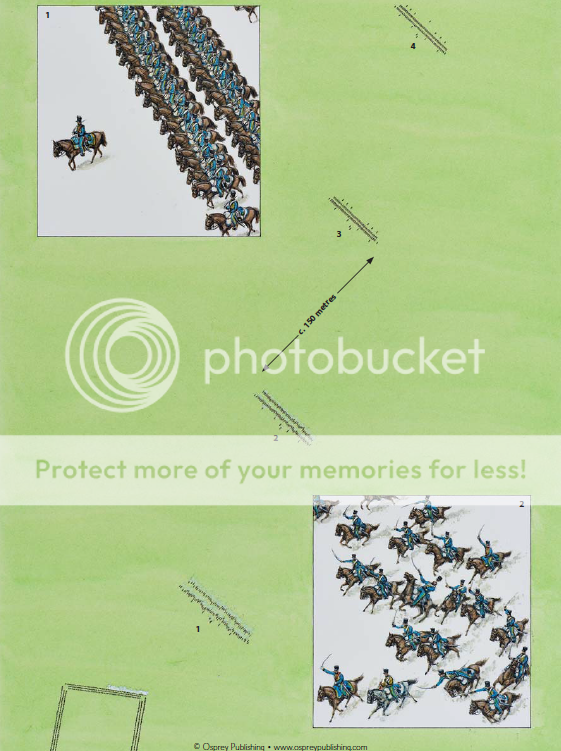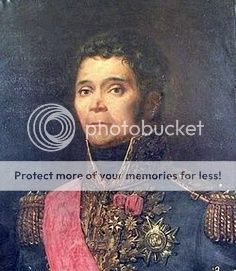AUSTERLITZ
SENIOR MEMBER

- Joined
- Jun 10, 2008
- Messages
- 6,025
- Reaction score
- 175
- Country
- Location
BACKGROUND : December 2, 1804 Notre-Dame cathedral in Paris.Napoleon Bonaparte crowns himself emperor of the french-the culmination of a meteoric whirlwind rise from a mere lieutenant of artillery just 10 years ago to undisputed master of the most powerful country in europe.(contemporary)An event made possible by the effects of the french revolution.Bonaparte had used the fame and glory acquired from his famous 1796 italian campaign which had led largely to the end of the first coalition,(read below plz for better understanding)
Battle Report #12 - Napoleon's Italian Campaign 1796. | Page 2
and then clever propaganda and glamour of his 1798 egyptian campaign to present himself as a saviour to the war weary french populace tired of the constant chaos and corruption in france in the aftermath of the revolution.In 1799 with the help of the army bonaparte overthrew the the rump directory and became first consul.
Consolidating his power base with a brilliant short second campaign in italy culminating in the battle of marengo(1800) against austria he brought an end to the 2nd coalition against france.For the first time in a decade peace was achieved with all of europe-even britain.Bonaparte used this respite to build up french economic strength and reform the country. 1800-1804 is usually considered bonaparte's greatest achievement,even without any battles.He brought about the concordat with the church,implemented the Code Napoleon-a civil code still used in france with modifications and one that was eventually adopted in various parts of europe,established the national bank of europe.Increased manufacturing ability and began large scale infrastructure development.This incredible success made him immensely popular in france,which the ambitious napoleon used to become the first french emperor.This move however offended the old ruling houses of europe who considered him a parvenu upstart.
ROAD TO WAR :
BRITAIN - The general peace existing was short lived and deceptive.France had simply made too many territorial gains in the revolutionary wars,its revolutionary ideas were held also as a existential threat by the monarchies of europe.Within just 14 months of the signing of peace between france and britain in 1802 the 2 countries were again at war.Conflicting maritime and colonial interests led to the inevitable.Britain refused to evacuate malta in the mediterranean.france in return embargoed british shipping.Britain declared war and france unable attack britain directly, occupied hannover in northern germany which was a heirdom of the king of britain.The british agitated in continental europe against france,offering liberal subsidies and arms to austria,prussia and russia for a general alliance against the common gallic foe.Prime minister William Pitt was to be the architect of the third coalition.Napoleon responded by collecting a vast army nearly 200,000 strong at boulogne,directly opposite britain's heartland and awaited a favourable oppurtunity to evade the royal navy,cross the channel and invade britain.
AUSTRIA - Austria had been exhausted by the long wars with france and was still midway through recovery,and military reform.However the loss of holland and north italy to france had not been forgotten and couldn't be reconciled.The direct annexation to france of piedmont and genoa,which had been earlier puppet republics further infuriated vienna.On top of this napoleon crowning himself emperor of france and king of italy was another direct insult.With britain ready to finance a new coalition she awaited her oppurtunity to strike back at france and her new emperor.
RUSSIA - Russia and France didn't have any direct conflict of interest save for the ideological one of monarchy and revolutionary republic.Though russia participated in the 2nd coalition it later withdrew and napoleon had come to enjoy a cordial relationship with the czar paul.However on paul's assasination at a palace coup and crowning of his son,the young czar alexander things changed.Czar alexander was possesed of many qualities,but was also indecisive and vacillitating.He was surrounded by many young and reckless advisors and nobles who were contemptous of the revolutionary french.The czar himself swung from francophille to francophobe.In 1805 he was having his francophobe period.Anxious to increase russian prestige in european courts and eager to be the first to defeat the hitherto invincible corsican he resolved to lead russia's armies in person.This policy of interventionism was in accordance with catherine the great's long practiced policy of actively engaging in europe and to establish russia as one of the arbriters of europe.British financial support only served to hasten russia's entry into the new grand coalition.
PRUSSIA - That left prussia,the remaining great power of europe.Prussia's position was interesting,on one hand it was pleased to see traditional german rival austria weakened.On the other hand steady french expansion into the rhine was noted with great concern.Both sides courted the prussians.Initially prussia attempted a policy of neutrality,however as the war party gained momentum prussia's entry into the coalition was stalled by a masterly french diplomatic stroke of offering hannover.Prussia thus vacillitated.
One last spark was needed to ignite the flame of war throughout europe.In late 14th march 1804 a party of french dragoons seized the exiled french noble duke of enghien from neutral territory of baden few miles from the french border.He was brought back to france,tried for treason and executed on charges that may or may not have been true.Bonaparte had been the target of several assasination attempts that were carried out by royalists and enghien was supposedly one of the plotters(no proof).He wished to send a message.This act of seizing a nobleman from neutral territory and then executing him created outrage in the courts of europe.The third coalition was now to be a reality.
GRAND PLANS OF THE THIRD COALITION:
By August 1805 the third coalition was in place.Russia,Austria,Britain,Naples and Sweden were the members.Prussia was expected to join later .A grandiose master plan was set up to crush napoleon and his parvenu empire with overwhleming force.
The plan called for an enormous europe wide advance on french territorial acquisitions from the baltic to the adriatic.
The northern attack was to liberate hannover.15,000 british soldiers of an expeditionary force were to join 20,000 russians and 12,000 swedes to accomplish this.
In germany the main allied attack would come.The austrian army nominally under archduke fredinand(in reality led by quatermaster mack)80,000 strong would invade french ally bavaria.They would be shortly joined by Kutuzov leading 50,000 russian troops.Kutuzov's force would be followed by a further 2 russian armies under bennigsen and buxhowden amounting to another 1,00000 men.These movements would also encourage the king of prussia and his 180,000 man army to join the fray.
In Italy,thought to be napoleon's favoured area because of the last 2 campaigns the best austrian commander Archduke charles led 100,000 austrian troops.His objective was to recover all of northern italy and resist any napoleonic riposte.
25,000 men under archduke john would serve as a link between charles and mack.
Finally from naples another combined force of british,russians and neapolitans around 50,000 on paper would clear south and central italy of the french and join archduke charles .
Thus a staggering scale of operations was envisaged which was hitherto unprecedented in european history.
The objectives of the third coalition were -
Primary-To roll back all french conquests and return france to her pre-1789 borders.
Secondary - Once this primary objective was achieved Mack and kutuzov would invade central france,charles bolstered by the neapolitans would invade southern france and the army from hannover northern france.The ultimate goal would be the overthrow of napoleon and the revolutionary order and the restoration of the bourbon monarchy on the french throne.
The coalition thus aimed to hurl nearly half a million men(500,000) at napoleonic france which could muster only over 250,000 effectives.However co-ordination between these fur allied flung forces was to be very difficult and if napoleon didn't wait for the enemy to strangle him with the noose and disrupted the allied advance,confusion could well arise.Adding to the problems,in a poor display of staffwork the fact that russians were still using the old julian calendar -different from the rest of europe was not noticed.This meant Kutuzov's army would arrive 12 days later than the austrians predicted to join mack.Nonetheless on paper the plans looked imposing enough for the royal courts of europe to confidently predict the ogre's demise.
FRENCH COUNTERPLAN -THE EMPEROR STRIKES BACK:
An enterprise of this scale couldn't evade the french network of spies.Neither was Napoleon idle.
In august 26,1805 a carriage carrying a handsome gentleman rolled into the town of mainz and then to frankfurt.In it was one Monsieur Beaumont,as written on his passport.Carefully circling the borders of the austrian empire and the german cities in the area the carriage circled back and came to a stop within french borders at strasbourg.Here Monsieur Beaumont reverted to his true identity - Marshal Joachim Murat,commander of the french cavalry and son-in-law of bonaparte.(one can remember murat from the italian campaign battle report).Here murat reported his detailed observations on austrian and russian preparations to napoleon and also on the terrain.As more and more reports piled up on his desk in paris,Napoleon considered his options.
A medium sized french force under marshal bernadotte was in hannover,other slender forces under St Cyr in Naples and Eugene in Italy.But the bulk of the french army was concentrated in boulougne on the channel coast facing england.This was Napoleon's weapon of mass destruction -' The Grande Armee.'Finely honed by the years of peace and training and formed of veterans of the revolutionary wars.If the allies managed to complete their concentration napoleon had few if any chances of survival.He would have to seize the initiative and change the rules of the game.But where would he strike?
''There are many good commanders in Europe,but they see too many things at once.I see only one thing-the enemy's main body.I crush it,confident that secondary matters will then settle themselves.
As the grand army is roused from its camps in boulogne the stage is set for one of the greatest campaigns in military history.
NEXT : Armies,Napoleon's art of war.
Battle Report #12 - Napoleon's Italian Campaign 1796. | Page 2
and then clever propaganda and glamour of his 1798 egyptian campaign to present himself as a saviour to the war weary french populace tired of the constant chaos and corruption in france in the aftermath of the revolution.In 1799 with the help of the army bonaparte overthrew the the rump directory and became first consul.
Consolidating his power base with a brilliant short second campaign in italy culminating in the battle of marengo(1800) against austria he brought an end to the 2nd coalition against france.For the first time in a decade peace was achieved with all of europe-even britain.Bonaparte used this respite to build up french economic strength and reform the country. 1800-1804 is usually considered bonaparte's greatest achievement,even without any battles.He brought about the concordat with the church,implemented the Code Napoleon-a civil code still used in france with modifications and one that was eventually adopted in various parts of europe,established the national bank of europe.Increased manufacturing ability and began large scale infrastructure development.This incredible success made him immensely popular in france,which the ambitious napoleon used to become the first french emperor.This move however offended the old ruling houses of europe who considered him a parvenu upstart.
ROAD TO WAR :
BRITAIN - The general peace existing was short lived and deceptive.France had simply made too many territorial gains in the revolutionary wars,its revolutionary ideas were held also as a existential threat by the monarchies of europe.Within just 14 months of the signing of peace between france and britain in 1802 the 2 countries were again at war.Conflicting maritime and colonial interests led to the inevitable.Britain refused to evacuate malta in the mediterranean.france in return embargoed british shipping.Britain declared war and france unable attack britain directly, occupied hannover in northern germany which was a heirdom of the king of britain.The british agitated in continental europe against france,offering liberal subsidies and arms to austria,prussia and russia for a general alliance against the common gallic foe.Prime minister William Pitt was to be the architect of the third coalition.Napoleon responded by collecting a vast army nearly 200,000 strong at boulogne,directly opposite britain's heartland and awaited a favourable oppurtunity to evade the royal navy,cross the channel and invade britain.
AUSTRIA - Austria had been exhausted by the long wars with france and was still midway through recovery,and military reform.However the loss of holland and north italy to france had not been forgotten and couldn't be reconciled.The direct annexation to france of piedmont and genoa,which had been earlier puppet republics further infuriated vienna.On top of this napoleon crowning himself emperor of france and king of italy was another direct insult.With britain ready to finance a new coalition she awaited her oppurtunity to strike back at france and her new emperor.
RUSSIA - Russia and France didn't have any direct conflict of interest save for the ideological one of monarchy and revolutionary republic.Though russia participated in the 2nd coalition it later withdrew and napoleon had come to enjoy a cordial relationship with the czar paul.However on paul's assasination at a palace coup and crowning of his son,the young czar alexander things changed.Czar alexander was possesed of many qualities,but was also indecisive and vacillitating.He was surrounded by many young and reckless advisors and nobles who were contemptous of the revolutionary french.The czar himself swung from francophille to francophobe.In 1805 he was having his francophobe period.Anxious to increase russian prestige in european courts and eager to be the first to defeat the hitherto invincible corsican he resolved to lead russia's armies in person.This policy of interventionism was in accordance with catherine the great's long practiced policy of actively engaging in europe and to establish russia as one of the arbriters of europe.British financial support only served to hasten russia's entry into the new grand coalition.
PRUSSIA - That left prussia,the remaining great power of europe.Prussia's position was interesting,on one hand it was pleased to see traditional german rival austria weakened.On the other hand steady french expansion into the rhine was noted with great concern.Both sides courted the prussians.Initially prussia attempted a policy of neutrality,however as the war party gained momentum prussia's entry into the coalition was stalled by a masterly french diplomatic stroke of offering hannover.Prussia thus vacillitated.
One last spark was needed to ignite the flame of war throughout europe.In late 14th march 1804 a party of french dragoons seized the exiled french noble duke of enghien from neutral territory of baden few miles from the french border.He was brought back to france,tried for treason and executed on charges that may or may not have been true.Bonaparte had been the target of several assasination attempts that were carried out by royalists and enghien was supposedly one of the plotters(no proof).He wished to send a message.This act of seizing a nobleman from neutral territory and then executing him created outrage in the courts of europe.The third coalition was now to be a reality.
GRAND PLANS OF THE THIRD COALITION:
By August 1805 the third coalition was in place.Russia,Austria,Britain,Naples and Sweden were the members.Prussia was expected to join later .A grandiose master plan was set up to crush napoleon and his parvenu empire with overwhleming force.
The plan called for an enormous europe wide advance on french territorial acquisitions from the baltic to the adriatic.
The northern attack was to liberate hannover.15,000 british soldiers of an expeditionary force were to join 20,000 russians and 12,000 swedes to accomplish this.
In germany the main allied attack would come.The austrian army nominally under archduke fredinand(in reality led by quatermaster mack)80,000 strong would invade french ally bavaria.They would be shortly joined by Kutuzov leading 50,000 russian troops.Kutuzov's force would be followed by a further 2 russian armies under bennigsen and buxhowden amounting to another 1,00000 men.These movements would also encourage the king of prussia and his 180,000 man army to join the fray.
In Italy,thought to be napoleon's favoured area because of the last 2 campaigns the best austrian commander Archduke charles led 100,000 austrian troops.His objective was to recover all of northern italy and resist any napoleonic riposte.
25,000 men under archduke john would serve as a link between charles and mack.
Finally from naples another combined force of british,russians and neapolitans around 50,000 on paper would clear south and central italy of the french and join archduke charles .
Thus a staggering scale of operations was envisaged which was hitherto unprecedented in european history.
The objectives of the third coalition were -
Primary-To roll back all french conquests and return france to her pre-1789 borders.
Secondary - Once this primary objective was achieved Mack and kutuzov would invade central france,charles bolstered by the neapolitans would invade southern france and the army from hannover northern france.The ultimate goal would be the overthrow of napoleon and the revolutionary order and the restoration of the bourbon monarchy on the french throne.
The coalition thus aimed to hurl nearly half a million men(500,000) at napoleonic france which could muster only over 250,000 effectives.However co-ordination between these fur allied flung forces was to be very difficult and if napoleon didn't wait for the enemy to strangle him with the noose and disrupted the allied advance,confusion could well arise.Adding to the problems,in a poor display of staffwork the fact that russians were still using the old julian calendar -different from the rest of europe was not noticed.This meant Kutuzov's army would arrive 12 days later than the austrians predicted to join mack.Nonetheless on paper the plans looked imposing enough for the royal courts of europe to confidently predict the ogre's demise.
FRENCH COUNTERPLAN -THE EMPEROR STRIKES BACK:
An enterprise of this scale couldn't evade the french network of spies.Neither was Napoleon idle.
In august 26,1805 a carriage carrying a handsome gentleman rolled into the town of mainz and then to frankfurt.In it was one Monsieur Beaumont,as written on his passport.Carefully circling the borders of the austrian empire and the german cities in the area the carriage circled back and came to a stop within french borders at strasbourg.Here Monsieur Beaumont reverted to his true identity - Marshal Joachim Murat,commander of the french cavalry and son-in-law of bonaparte.(one can remember murat from the italian campaign battle report).Here murat reported his detailed observations on austrian and russian preparations to napoleon and also on the terrain.As more and more reports piled up on his desk in paris,Napoleon considered his options.
A medium sized french force under marshal bernadotte was in hannover,other slender forces under St Cyr in Naples and Eugene in Italy.But the bulk of the french army was concentrated in boulougne on the channel coast facing england.This was Napoleon's weapon of mass destruction -' The Grande Armee.'Finely honed by the years of peace and training and formed of veterans of the revolutionary wars.If the allies managed to complete their concentration napoleon had few if any chances of survival.He would have to seize the initiative and change the rules of the game.But where would he strike?
Then came the news of the austrian invasion of Bavaria.Napoleon shelved plans for the invasion of england and turned his attention west.(further hampered by indecisiveness of french admirals).Massena ,his most trusted veteran general was sent to Italy to take command of the 50,000 troops there.His job was to keep archduke charles in check for a temporary period.St Cyr was left with a meagre force to hold naples.Marshal brune stayed in france with 30,000 mostly second rate troops to defend against a british seaborne invasion of the french coast.The rest of the 'Grande Armee' camped on the channel coast was to be unleashed on the allied forces in germany with a speed austro-russian high command would not believe possible.Contrary to the mistaken belief in austrian high command that napoleon would attack in italy,the main french effort would come against the main allied armies in germany.The secondary theatres were allocated minimal or no troops at all.In accordance with napoleon's principles-''There are many good commanders in Europe,but they see too many things at once.I see only one thing-the enemy's main body.I crush it,confident that secondary matters will then settle themselves.
As the grand army is roused from its camps in boulogne the stage is set for one of the greatest campaigns in military history.
NEXT : Armies,Napoleon's art of war.
Last edited:




